

 | |
 | |
|
|
Constitutional EnterpriseVolume 2 Number 1, February 1994 © 1994-1998, Richard L. Forschler, SeaTac, Washington. All rights reserved.What is Constitutional Enterprise?Constitutional Enterprise is the name of this newsletter and the name of a new business methodology. As a method of structuring business organizations Constitutional Enterprise (CE) is modeled after the United States Constitution and the free-enterprise system. If history has taught us anything, in the past two centuries, it is that limited governments and free markets are not only more satisfying, but more productive as well. Much of the credit for this success is due to the self-organizing nature of free-markets. Government-level strategic planning of industry has not only been unnecessary, but when practiced, it has misdirected the market. CE heavily relies upon this self-organizing feature of market systems. For this reason no top-down strategic planning is necessary; even for such otherwise worthwhile activities as identifying competitive advantage, core competence, or performing market-gap analyses. [1] Today, centrally controlled governments and centrally controlled businesses are both under tremendous pressures to down-size their operations—crumbling under the ponderous weight of their own bureaucracies. Serious doubts exist about the validity of hierarchies and their top-down command structure. The question now is: What will take their places? In many countries, and in many businesses, it appears free-market institutions will prevail. CE is a method for incorporating free-market disciplines inside businesses. In This IssueThis issue of Constitutional Enterprise describes the general concepts of the CE methodology and attempts to show what it would look like in businesses. Exhibit 1, below, graphically illustrates the CE conceptual architecture. It maps the hierarchy of key ideas—concepts—but does not illustrate more detailed features; such as the flow of products, capital, or information. 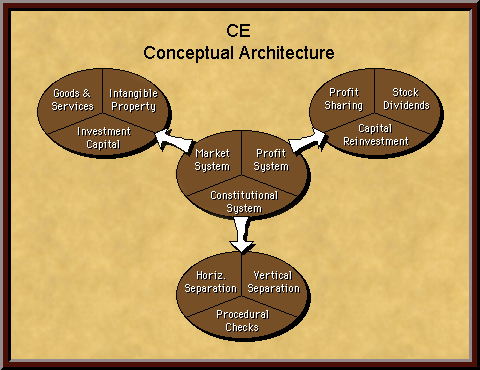 Exhibit 1 Virtually all companies choosing to implement CE will follow the general principles and structure described in this issue. They may, however, vary considerably in particulars. Future issues of Constitutional Enterprise will describe specific features of CE, relating them to the philosophical foundations of the concepts involved, and giving both real and hypothetical examples to describe them. In contrast, this issue only describes general concepts without delving into details. It provides an outline, or guide, for the content of future issues of Constitutional Enterprise. CE—Purposes and PerspectivesConstitutional Enterprise is designed to balance the needs of customers, employees, and shareholders. People often believe the purpose of a business is to earn a good return for its shareholders—to make money. This is true only from a shareholder's perspective. The purpose of a business from a customer's perspective is to provide a worthwhile product or service, and from an employee's perspective, to ensure adequate income and secure employment. Quite literally, satisfying any one of their needs depends upon satisfying the other two. To someone accustomed to the structure of traditional businesses, observing a CE-structured business can be confusing. Since there is no top-down hierarchy, and the duties of the elected representatives are so limited, it can easily appear that no one is guiding the ship. But the guidance provided by market forces is no less tangible than guidance provided by upper management. It is simply better at satisfying the needs of customers. Additionally, the idea that employees can choose their own salaries strikes the traditionally minded as being absurd. However, when an internal capital investment market exists, and a profit system links the profits of employees to those of shareholders, the needs of both are naturally met. But before we can fully understand the forces that bring balance to the needs of shareholders, customers, and employees, we must describe the general systems in which they operate. Core SystemsAs shown in exhibits 1 and 2, three core systems make up the center of the CE conceptual model—a constitutional system, a market system, and a profit system. 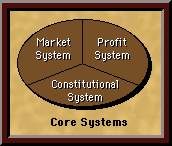 Exhibit 2 The CE approach uses analogies from the society outside businesses to aid in understanding the society inside. This does not mean that other internal systems will not work, or even that the external ones chosen are perfect in their design, but only that they are an improvement over our current methods and provide a familiar model for comprehending the necessary changes. It is also possible that as we use the lessons we have learned from the external society to improve the internal one, we may also learn new lessons on the inside that will help us improve the society on the outside. Constitutional SystemThe constitutional system is modeled after the system defined in the United States Constitution. The written company constitution contains rules for the election or selection of the central organization's officers, defines those officers' duties, and identifies critical employee rights for guiding the actions of the legislative, judicial, and executive branches. Since the authority to govern ownership rights could either be used to protect them, or to take them away, the constitutional system has three methods for preventing abuse. 1. horizontal separation of authority, 2. vertical separation of authority, and 3. cross-discipline procedural checks. See exhibit 3, below. 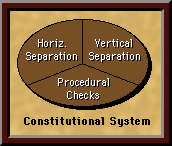 Exhibit 3 Horizontal Separation—A horizontal separation divides the functions of the central organization into three branches—legislative, judicial, and executive. The purposes of these branches are to define, mediate, and protect the exchange of ownership rights within the organization, thus providing the environment in which the internal free-market system operates. They also create the perception of legitimacy, equity, and opportunity that is essential for creativity and motivation to occur. [2] Vertical Separation—Within the CE constitutional structure jurisdictions are separated vertically. For example, company-wide concerns are addressed by the central organization, departmental concerns are addressed by the departments, and individual concerns are addressed by the individuals themselves. The officers of the central organization have no authority over the design, production, or delivery of goods and services. The only time they can directly influence the internal free-market processes is when they are defending against a potential injury to ownership rights. Procedural Checks—The purpose of procedural checks is to prevent any one jurisdiction or branch of the organization from exceeding its constitutional limits. Various methods are employed to allow the actions of one discipline to check another. A Presidential veto would be one example of a procedural check. Procedural checks are defined in, and implemented by, the company constitution and are different from organic-like checks, discussed later, which exist in the nature of the system, but don't require explicit definition. Market SystemThe internal free-market system brings to the inside of businesses the same efficiency and innovation present in external market systems. Each individual or department is free to exchange property with others, both inside and outside the company. Understanding the market system begins with the concept of property ownership. Indeed, the operation of the market is literally nothing but the exchange of one set of ownership rights for another. Without such rights, no market exists. The CE approach depends upon making employees act as though they were owners. However, all material property in a business is owned by the stockholders. To solve this dilemma a metaphor of property is employed. Ownership, or rather internal ownership in this sense, is not the same as ownership in the external society because the employees cannot use this property for purely self-benefiting purposes. Rather, their role is more like custodians, or stewards, over the property; applying it to its most productive use for the benefit of both themselves, the stockholders, and the customers. As shown in exhibit 4 this internal form of free-enterprise includes three categories of property—goods and services, intangible property, and investment capital. 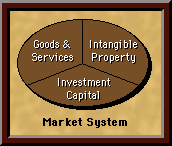 Exhibit 4 Goods and Services—Each department in a CE structured business competes with other similar departments and freely buys and sells the necessary goods to carry on its productive activities. This is the only way to determine the true value of something and efficiently regulate its quantity. The market value of something is exactly what people are willing to exchange for it. This explains why, in a traditional business, where departments provide goods to each other without cost, the true value of items is unknown. Waste, in such companies, is nearly impossible to identify. Intangible Property—A market system also requires the ability to exchange things of value that are less tangible than goods and services. Intangible property includes such things as: intellectual property, like patents and copyrights; reputation property, like trade names, trade marks, and certifications; and obligatory property, like contracts, promises, and warranties. Investment Capital—Any market-based system is critically flawed if it doesn't possess a market for investment capital. In the external market, competition for investment capital, causes capital to naturally flow toward its most productive use. This same feature must also exist in the internal market society if the shareholders' investments are to be used to their maximum benefit. Employees or departments seek loans for the purchase of material resources and compete with each other based upon their ability to produce a profit. Profit SystemThe CE profit system is designed to balance the needs of employees with those of shareholders and the need to reinvest profit in the company. When departments or individuals in a CE business successfully achieve and declare a profit it is divided into three portions—stock dividends, capital reinvestment, and profit sharing.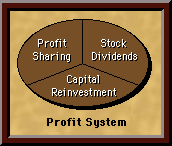 Exhibit 5 Stock Dividends—A portion of all profit goes directly to the shareholders in the form of stock dividends. To maintain a competitive position in the external investment market the percentage of profit used as dividends may vary from one distribution period to the next. Capital Reinvestment—Another portion of all profit is used to reinvest in the company. It is deposited in a special fund from which the employees seek loans for the purchase of capital goods and resources. Interest earned on these loans provides income for those departments providing debt service. Profit Sharing—The third and last portion of all profit is distributed to the employees of the departments that generate it. This becomes the first tier of the profit sharing system. Then a second tier occurs as the departments repay the loans made from the reinvestment fund. The returning principal is shared with the employees company-wide. This two-tier system helps to balance short-term with long-term profitability. While most features of CE are closely modeled after the external society, profit sharing, as a concept, is a notable exception. No direct counterpart to profit sharing exists in the external society. Nevertheless, this system is essential to compensate for the metaphorical nature of property rights in a CE business. Profit sharing extends the benefits of internal ownership beyond the metaphor—it makes them real. The Organic-like Nature of CEThe interaction of CE's various systems mimics organic adaptation. Only an organic-like adaptation to changing conditions can rapidly deliver the products to satisfy customer demands. In a CE business the combination and discipline of internal market forces and the organic-like checks of the profit system naturally balance the needs of customers, shareholders, and employees. A new popular theme in business literature refers to organizations by organic terms. Learning organizations and intelligent organizations are two such terms. [3] Unfortunately, organizations are neither intelligent nor possess the capacity to learn. Only organisms possess these traits, and only individually, never collectively. Under certain circumstances, the combined actions of individuals, who do possess such traits, can give the appearance that their organizations possess them also. But CE draws a clear distinction. It is not a system that loses sight of the individual—it possesses organic-like features, but does not claim to be a learning organization, or an intelligent organization. Like the free-market itself, CE is simply a system for investors, workers, and consumers to collectively maximize their own rewards. Notes:
AcknowledgmentsI would like to thank Ralph Heinze, Brad Jeter, and Andrew Wilson for reviewing this, and previous issues, of Constitutional Enterprise and for giving helpful comments and suggestions. While I must claim responsibility for the content of the newsletters, I'm convinced Constitutional Enterprise would be better organized and composed if it were written by any one of these outstanding individuals. I would also like to thank Jerry Weaver for offering to place ASCII versions of Constitutional Enterprise on his BBS The Electronic Advertiser.
In The Next IssueThe next issue of Constitutional Enterprise will describe the Constitutional system of CE; including the Legislative, Executive, and Judicial branches. Go Back to the top of this page [ Home Page | About CBC | FAQ | Topics | Newsletters ] For more information contact Constitutional Business Consulting. © 1999 – 2009 Constitutional Business Consulting Inc., SeaTac, Washington. All rights reserved. |